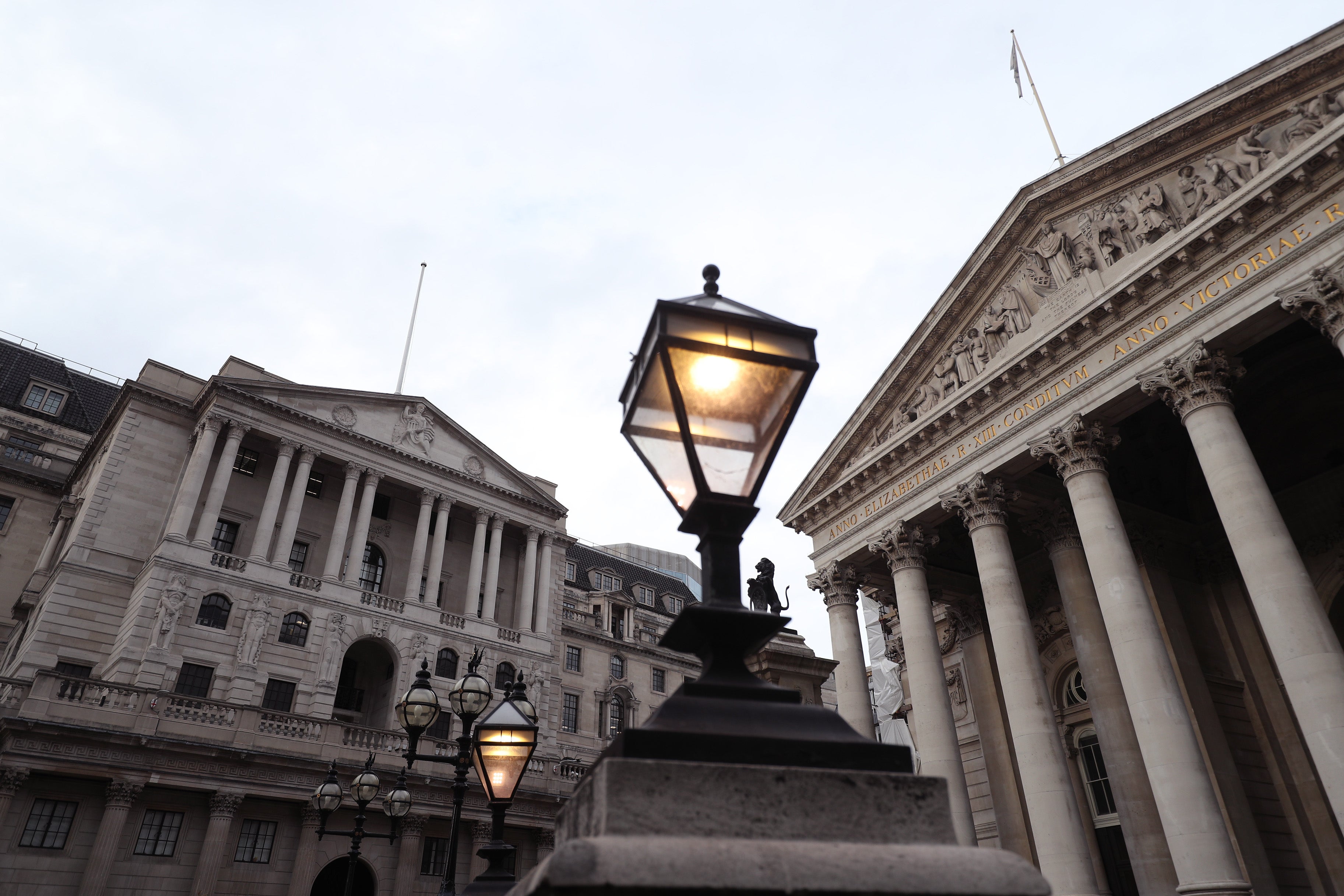British banks to be tested against recessions worse than 2008 financial crisis
The Bank of England will put eight of the UK’s leading banks under a hypothetical scenario to determine how resilient the sector is.

Your support helps us to tell the story
From reproductive rights to climate change to Big Tech, The Independent is on the ground when the story is developing. Whether it's investigating the financials of Elon Musk's pro-Trump PAC or producing our latest documentary, 'The A Word', which shines a light on the American women fighting for reproductive rights, we know how important it is to parse out the facts from the messaging.
At such a critical moment in US history, we need reporters on the ground. Your donation allows us to keep sending journalists to speak to both sides of the story.
The Independent is trusted by Americans across the entire political spectrum. And unlike many other quality news outlets, we choose not to lock Americans out of our reporting and analysis with paywalls. We believe quality journalism should be available to everyone, paid for by those who can afford it.
Your support makes all the difference.Britain’s biggest banks will be stress tested against scenarios more severe than the 2008 financial crisis, to see whether they can withstand inflation rocketing to 17% and interest rates hiked up to 6%.
The Bank of England will put eight of the UK’s leading banks under a hypothetical scenario to determine how resilient the sector is against severe but plausible recessions.
The stress tests will assess the impact of series of global economic shocks, starting from the end of June this year and spanning a five-year period.
- Inflation peaking at 17% in 2023 and averaging at 11% over three years
- UK GDP falling by 5% over the first year
- UK unemployment more than doubling to a peak rate of 8.5%.
- Interest rates spiking to 6% in early 2023 before gradually reducing to under 3.5%.
- Housing market crash with property prices plummeting by around one-third over the first year
- Commercial property prices sliding 45% during the duration of the five-year scenario.
The worst-case scenario imagines inflation peaking at 17% in 2023 and averaging at 11% over three years, UK GDP falling by 5% over the first year, and UK unemployment more than doubling to a peak rate of 8.5%.
Banks will be tested against interest rates spiking to 6% in early 2023 before gradually reducing to under 3.5%.
It also imagines a housing market crash whereby property prices will plummet by around one-third over the first year and commercial property prices will slide 45% during the duration of the five-year scenario.
The purpose of the stress tests is to ensure that major lenders can “absorb rather than amplify” economic shocks, to support UK households and businesses effectively, the Bank of England said.
It emphasised that the doomsday figures used for the tests are not a forecast for the future economy, but are feasible events.
It will test banks against a scenario that is more severe than the global financial crisis for both the UK and the world, the central bank said, painting a worrying picture for the health of the economy.
- Barclays
- HSBC
- Lloyds Banking Group
- Nationwide
- NatWest Group
- Santander UK
- Standard Chartered
- Virgin Money UK
Last week, the Bank of England raised the base rate to 2.25% and said that it expects a 0.1% fall in GDP over the current quarter, indicating that the country is already in a recession.Meanwhile, the pound sunk to its lowest level on record against the US dollar early on Monday in a sign that global confidence in the currency is crashing.
The Bank of England’s annual stress test was last conducted in 2019, with the onset of Covid leading to pandemic-focused stress tests that assessed the resilience of banks against negative interest rates and a double-dip recession.
This year’s test was due to be launched in March but had to be postponed after Russia’s invasion of Ukraine which had severe economic and financial implications.
The banks and building societies to be put to the test are Barclays, HSBC, Lloyds Banking Group, Nationwide, NatWest Group, Santander UK, Standard Chartered and Virgin Money UK – collectively accounting for around 75% of lending in the UK.
And for the first time, ring-fenced subgroups of Barclays, HSBC, Lloyds Banking Group and NatWest Group will also be assessed on a standalone basis.
The results of this year’s test are set to be published in mid-2023.